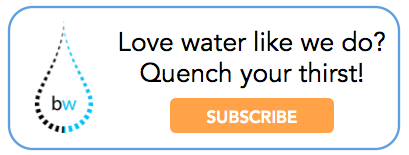True Life of a Plastic Bottle
True Life of a Plastic Bottle
We see plastic bottles everywhere, the majority of which can be found in the trash. You may be done with it, but the bottle still has a long way to go before reaching it’s final resting place. Bottled water companies spend millions each year on advertising and Americans purchase an increasing number of plastic bottles each year. It may seem like a simple transaction: buy, drink, dispose – but plastic bottles have a long journey before you ever take a sip.
Birth of a Bottle

Plastic bottles are created by treating crude oil and natural gas. Most plastic bottles are made from polyethylene terephthalate, or PET. To fill the demand for plastic bottles in the United States, we use 17.6 million barrels of oil annually, not including the oil used to transport the product. Bottled water companies buy chemically treated pellets which are then heated and shaped into plastic bottles. The bottles are then filled, packaged and packed on a truck for delivery.
Shelf Life
During the trip to the store the plastic bottles have managed to appreciate in value by about 2000%. The plastic bottle and water, which cost cents to produce will then be sold for $4, $5, or more and disposed of. Hopefully the bottle will be recycled, however this map showing the percentage of recycled material displays just how little is properly disposed of. The vast majority of plastic bottles are thrown in the trash rather than recycled, leaving two options for the future of your plastic bottle.
Recycling

Ideally, this is where all plastic bottles should go. Nationally, however, only 30% of bottles end up being recycled. Plastic that is recycled gets sterilized, shredded, and then sold back to companies to be re-used. The shredded plastics are used for more bottles, plastic bags, and most end up used in clothing or fabrics. Some innovators are finding unique ways to utilize recycled plastics, so be sure that you know exactly what and when to recycle in Boston.
Death/Afterlife

The vast majority or plastic bottles are sent to landfills or end up in the ocean. It takes plastic bottles hundreds of years to degrade, and if these plastics end up in a densely packed landfill the process can take even longer. As we have already seen, millions of plastic bottles each year end up in the Great Pacific Garbage Patch. The degrading bottles destroy wreak havoc on ocean ecosystems and sea animals.
It’s easy to forget that plastic bottles are around a lot longer than it takes us to buy, drink, and toss them. Recycling is an excellent step but not enough to save our environment. We all must stop using PET plastic bottles and switch to reusable, eco-friendly alternatives. Each plastic bottle you use will be on the planet long after you’re gone.
Stay updated on this topic by signing up for our newsletter:




